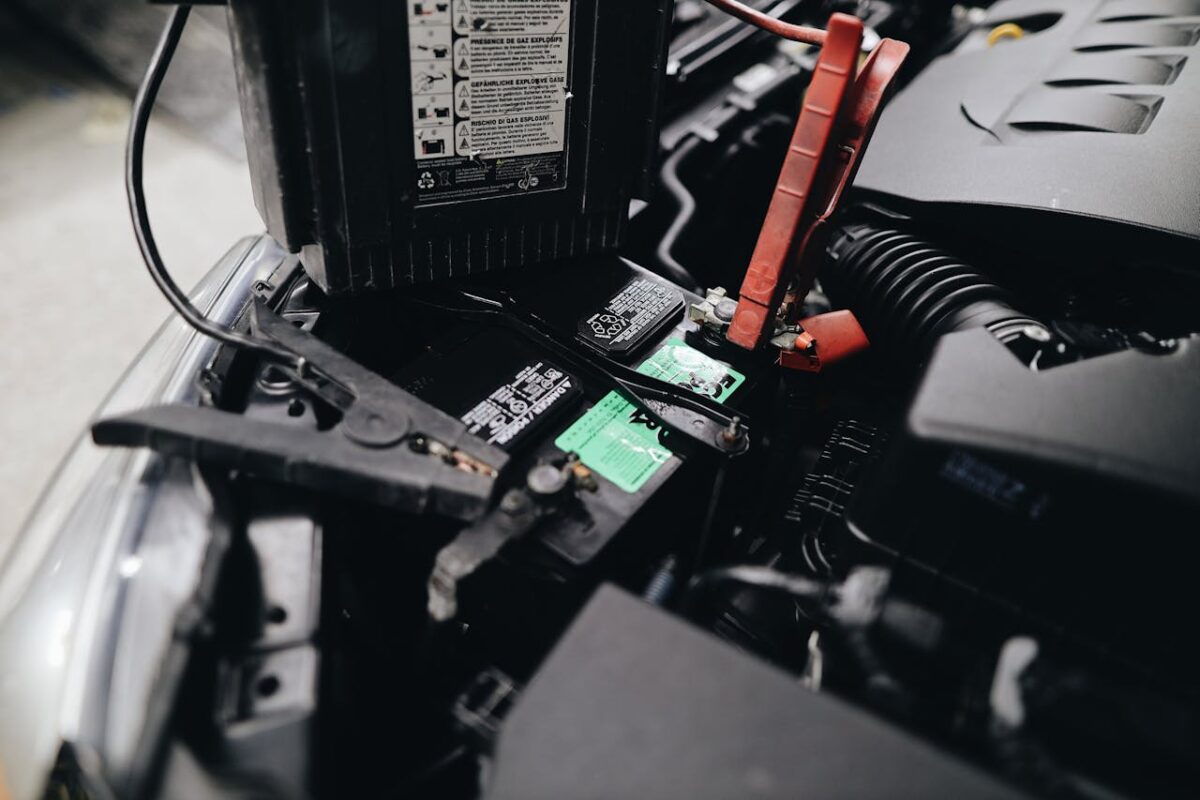When your vehicle won’t start or you’re experiencing electrical issues, determining whether the alternator or battery is at fault can save you time and money. Both components work together to power your vehicle’s electrical system, but they serve different functions and fail in distinct ways. Understanding how to diagnose which component is causing your problems will help you address the issue correctly and get back on the road quickly.
Testing Your Battery for Common Issues
The battery is often the first component to check when experiencing starting problems, as it’s responsible for providing the initial power to start your engine. A healthy car battery should read between 12.4 and 12.7 volts when the engine is off. If you have a multimeter, connect the positive lead to the positive terminal and the negative lead to the negative terminal to check this voltage. When the reading falls below 12.4 volts, your battery may be struggling to hold a charge properly.
Visual inspection of your battery can reveal several telltale signs of failure. Look for corrosion around the terminals, which appears as a white, blue, or green powdery substance. This corrosion can prevent proper electrical connection and cause starting issues. Check for any bulging or swelling of the battery case, which indicates internal damage from overheating or overcharging. If your battery is more than three to five years old, it may simply be reaching the end of its natural lifespan, as batteries gradually lose their ability to hold charge over time.
The way your vehicle behaves when trying to start provides valuable clues about battery health. If you turn the key and hear a clicking sound but the engine doesn’t turn over, this typically indicates insufficient battery power. Dim headlights when the engine is off, or interior lights that fade when you try to start the car, also point to battery problems. In cold weather, batteries lose significant capacity, so if your car struggles to start only on cold mornings, the battery is likely the culprit rather than the alternator.
Identifying Alternator Problems Through Key Symptoms
The alternator charges your battery whilst the engine runs and powers all electrical components during operation. Unlike battery issues that typically prevent starting, alternator problems often reveal themselves whilst driving. A failing alternator won’t charge the battery properly, leading to a gradual loss of electrical power that affects various systems in your vehicle. This distinction helps narrow down which component is failing.
Dashboard warning lights provide the most obvious indication of alternator trouble. Most modern vehicles have a battery-shaped warning light that, despite its appearance, actually indicates charging system problems rather than battery issues specifically. This light illuminates when the alternator isn’t producing sufficient voltage to charge the battery. Some vehicles display “ALT” or “GEN” warnings instead. If this light comes on whilst driving, especially at lower RPMs, your alternator likely needs attention.
Electrical components behaving erratically whilst the engine runs strongly suggests alternator failure. You might notice headlights that brighten and dim with engine speed, or interior lights that flicker randomly. Power windows may operate slowly, and the radio might cut out intermittently. These symptoms occur because the alternator can’t maintain consistent voltage output. If multiple electrical systems act up simultaneously whilst driving, particularly if they worsen as you use more car accessories, the alternator is probably failing to meet your vehicle’s electrical demands.
Simple Tests You Can Perform at Home
The jump-start test offers a straightforward way to differentiate between battery and alternator problems without special tools. If your car starts easily with a jump but dies shortly after removing the jumper cables, your alternator isn’t charging the battery. Conversely, if the car continues running after a successful jump-start and you can drive normally, the battery was likely the issue. However, remember that a weak battery can damage an alternator over time by forcing it to work harder, so both components may need attention.
A voltage test whilst the engine runs provides definitive answers about alternator function. Start your vehicle and measure the voltage across the battery terminals with a multimeter. A properly functioning alternator should produce between 13.5 and 14.5 volts at idle. Rev the engine to about 2000 RPM; the voltage should remain steady or increase slightly. If the voltage stays below 13 volts or exceeds 15 volts, your alternator requires immediate attention. Fluctuating readings that jump erratically indicate internal alternator problems, such as worn brushes or failing diodes.
The headlight test offers another simple diagnostic method requiring no tools. Park facing a wall or garage door at night, start the engine, and observe your headlight brightness. With the engine idling, turn on the heater fan, rear defroster, and radio. If the headlights dim significantly or flicker when you add electrical loads, the alternator can’t keep up with demand. Healthy alternators maintain consistent brightness regardless of accessory use. This test works particularly well for identifying alternators that function marginally but can’t handle full electrical loads.
Understanding the Connection Between Battery and Alternator
Your vehicle’s charging system relies on both components working together harmoniously. The battery provides power to start the engine and acts as a buffer for electrical demands, whilst the alternator replenishes the battery and powers electrical systems during operation. When one component fails, it places additional stress on the other, potentially causing premature failure. This interdependence means that replacing only one component without checking the other could lead to repeated failures.
A failing alternator will eventually drain even a new battery, as the battery depletes whilst trying to power the vehicle’s electrical systems alone. Similarly, a bad battery forces the alternator to work continuously at maximum output, causing overheating and premature wear of internal components. This relationship explains why some vehicles experience both battery and alternator failure within a short timeframe. Professional auto electricians always test both components when diagnosing charging system problems to ensure complete system health.
Age and maintenance history help predict which component might fail first. Batteries typically last three to five years in New Zealand’s climate, whilst alternators often function for 100,000 to 150,000 kilometres or seven to ten years. Regular maintenance, such as keeping battery terminals clean and ensuring the alternator belt maintains proper tension, extends component life. If you know when either component was last replaced, you can make educated guesses about which might be failing, though proper testing remains essential for accurate diagnosis.
When Professional Diagnosis Becomes Essential
Whilst basic tests can identify obvious failures, intermittent problems or subtle charging system issues require professional diagnostic equipment. Modern vehicles have complex charging systems with computer-controlled alternators that adjust output based on various factors including battery temperature, electrical load, and engine conditions. These smart charging systems can’t be properly diagnosed with simple voltage tests alone. Professional auto electricians use specialised equipment to analyse charging patterns and identify problems that basic testing might miss.
Safety concerns make professional assistance crucial in certain situations. Working around car batteries involves risk of acid exposure, electrical shock, and explosion from hydrogen gas. Incorrectly jump-starting a vehicle or mishandling battery connections can damage sensitive electronic components, potentially costing thousands in repairs. If you notice unusual smells, see smoke, or hear strange noises from the alternator or battery area, stop driving immediately and seek professional help. These symptoms indicate serious problems that could lead to vehicle fires or complete electrical failure.
Cost considerations often favour professional diagnosis over guesswork. Replacing the wrong component wastes money and leaves you with the original problem unsolved. Professional auto electricians can perform comprehensive charging system tests that examine not just the battery and alternator, but also check for parasitic drains, wiring issues, and belt problems that might cause similar symptoms. This thorough approach ensures you only replace components that actually need replacement, saving money in the long run.
Need Help Diagnosing Your Vehicle’s Electrical Problems?
Determining whether your alternator or battery is causing issues requires careful observation and proper testing. Whilst simple tests can often identify the problem, complex electrical issues benefit from professional diagnosis to avoid costly mistakes.
As experienced auto electricians in Auckland, Eurosparx can quickly diagnose and repair your vehicle’s charging system problems. Contact our team today by calling 09 218 7789 to schedule your electrical system inspection and get back on the road with confidence.


